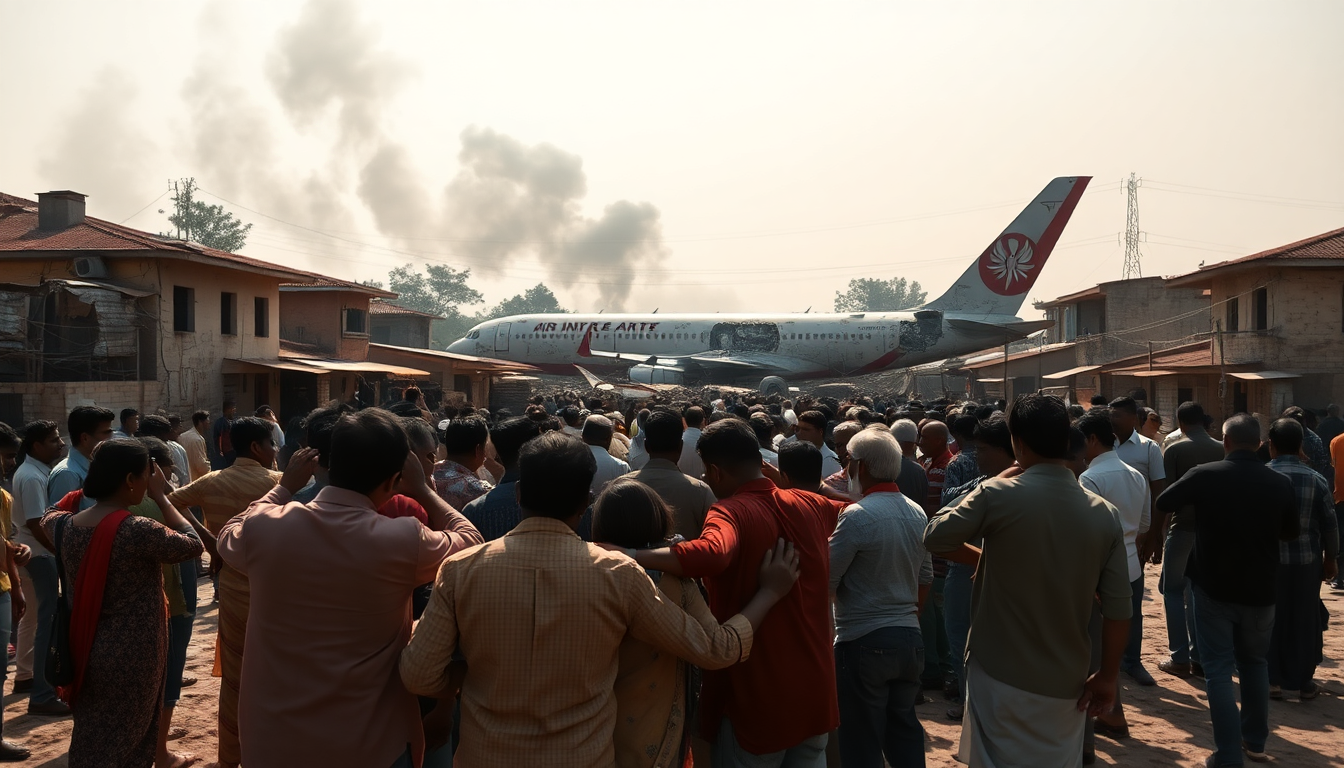Table of Contents
Imagine the gut-wrenching horror of hearing that a loved one’s plane has just crashed. That’s the grim reality faced by families of the passengers aboard Air India flight AI171. Just five minutes after taking off from Ahmedabad, this aircraft—carrying 230 souls—plummeted into a residential area.
Talk about a nightmare.
The chaos unfolds
The flight, a supposed lifeline between India and the U.K., was set to land at Gatwick Airport, but instead, it became a vessel of despair. With 53 British nationals on board, the implications of this disaster rippled through communities across both countries.
How does one even begin to process such catastrophic news? India’s Directorate of Civil Aviation Chief, Faiz Ahmed Kidwai, was quick to spill the tragic details, confirming the plane carried a mix of nationalities—169 Indians, one Canadian, and seven Portuguese among them.
You can almost hear the collective gasp of disbelief as families processed this shocking development.
Government response and public sentiment
Lucy Powell, the Leader of the House of Commons in the U.K., stepped up to the plate, promising that the government would provide “all the support that it can” to affected families.
But let’s be real—how much can bureaucratic platitudes do in the face of such raw pain? “We send our deepest sympathy and thoughts to all those families,” she stated, perhaps a little too rehearsed, don’t you think? It’s like reading from a script while the world crumbles around you.
Air India’s statement and the aftermath
Air India’s response? A bland acknowledgment of the incident, stating they were “ascertaining the details.” Seriously? That’s the best they could come up with? Meanwhile, the Civil Aviation Minister, Ram Mohan Naidu Kinjarapu, publicly expressed his shock and devastation.
But where’s the action? Words are cheap, and in a crisis, we need more than just hollow reassurances.
Flight details and shocking statistics
This crash marks a dismal milestone: the first-ever Boeing 787 aircraft crash in its 14-year history of passenger flights. The stats are staggering, but they mean little to those grappling with the emotional fallout. The last signal from the aircraft was received a mere 190 meters after takeoff—an all-too-brief moment of hope before disaster struck. The world might be moving on, but for the families, time stands still.
The political landscape shifts
As the news spread, the British government found itself in a tricky position. The Foreign Office confirmed they were working with local authorities in India to piece together the facts. But let’s face it—the public is not just looking for facts; they want accountability. A group of more than 300 Foreign Office staff even penned a letter to Foreign Minister David Lammy, calling out the government’s failure to act against Israel, which raises the question: how can they effectively respond to a tragedy like this when they’re embroiled in their own political mess?
Community response and the quest for answers
Amidst the chaos, communities on both sides of the ocean are left to pick up the pieces. Families are left anxiously waiting for news, their lives paused in a cruel limbo. And while authorities promise investigations and support, the question on everyone’s lips remains: how could this happen? The wreckage of dreams and lives shattered will not be easily forgotten.
A future filled with uncertainty
As rescue teams mobilize and efforts are underway to deliver medical aid, one can’t help but feel a sense of dread about what comes next. Will there be answers? Or will this tragic event fade into the background noise of a world that moves too fast? The reality of air travel is that it can turn from mundane to catastrophic in the blink of an eye. It’s a harsh reminder that life is unpredictable, and sometimes, it feels like we’re all just passengers on this crazy ride.





